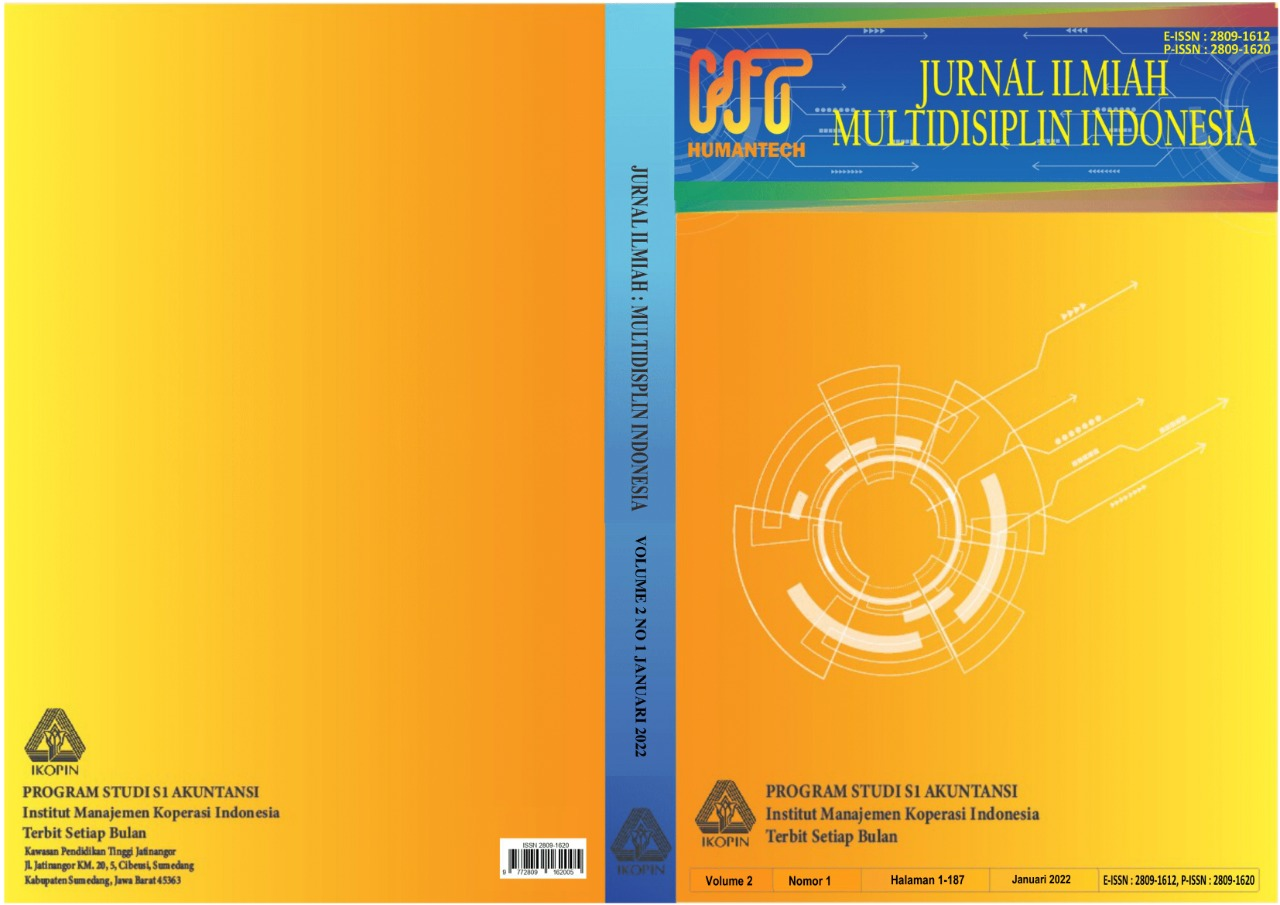Analisis Supply Chain Management dan Enterprise Resource Planning pada Perusahaan H&M
Main Article Content
Abstract
The development of world technology is very fast, so people can very easily
communicate in any way without considering distance and time. One way to get
it all is to have the internet. Over time the use of the internet is growing day by
day. This has a positive impact on all groups of people because they can access
it through Internet Banking. Apart from the positive side of the internet, it turns
out that there are also negative impacts from the internet on people's daily lives,
such as credit card burglary through the Internet Banking system, so the public
or customers must be cautious in guarding against credit card burglaries
carried out by irresponsible persons, on the other hand, Indonesian banks have
several regulations in place to protect their customers, especially in the use of
credit cards. For example, customers can sue criminally, where customers can report the bank as a credit card provider to the authorities on the suspicion that
the bank has distributed customer personal data. At the same time, civilly, they
can claim compensation from the bank. The number of cases related to the
leakage/misuse of customer personal data has become a central issue in the
banking industry. This problem is crucial because it is related to customer
security and trust in the existence of banking institutions, so it needs to be
addressed as much as possible.
Article Details
References
Anwar, S. N. (2011). MANAJEMEN RANTAI PASOKAN (SUPPLY CHAIN
MANAGEMENT) : KONSEP DAN HAKIKAT. Jurnal Dinamika Informatika.,
(1), 20–28. https://doi.org/https://doi.org/10.35315/informatika.v3i2.1315
Christyono, F. (2017). ANALISIS SUPPLY CHAIN PADA PT. CAHAYA INDO
PERSADA. AGORA, 5(3).
Dwinda, A. (2021). 4 Keuntungan Sistem Enterprise Resource Planning (ERP) (p. 1).
https://employers.glints.id/resources/4-keuntungan-sistem-enterprise-resourceplanning-erp/
Ellitan, L. (2017). Reengineering Proses Bisnis : Tinjauan Konseptual dan Metodologi.
(1), 12–21.
Geffenberger, K. (2018). Metode Penelitian. Angewandte Chemie International Edition,
(11), 951–952., 64–85.
Megalomania. (2015). Perencanaan sumber daya perusahaan (ERP).
Drholix.Wixsite.Com.
Punjawan, I. N., & Mahendrawathi. (2010). Supply Chain Management. Guna Widya.
Rathore, M. S., Maheshwari, K., & Jain, S. (2019). Fast Moving H&M: An Analysis of
Supply Chain Management. International Journal of Advanced Research and
Innovative Ideas in Education, 5(4), 15576–1568.
http://ijariie.com/AdminUploadPdf/Fast_Moving_H_M__An_Analysis_Of_Supply
_Chain_Management_ijariie10784.pdf
Sugiyono. (2019). Generalisasi. 43. 43–51.
Sumner, M. (2014). Enterprise Resource Planning (1st ed.). PEARSON.
Ulfah, M., Maarif, M. S., Sukardi, & Raharja, S. (2016). Analisis Dan Perbaikan
Manajemen Risiko Rantai Pasok Gula Rafinasi Dengan Pendekatan House of Risk.
Jurnal Teknologi Industri Pertanian, 26(1), 87–103.

